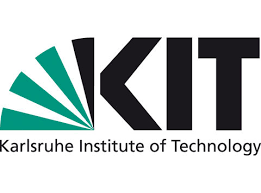Karlsruhe Institute of Technology: Solar park 2.0: More yield with the same area
Shade, dirt or aging – unfavorable conditions for solar modules can significantly reduce the yield of large photovoltaic ground-mounted systems. In the Solarpark 2.0 research project, the Karlsruhe Institute of Technology (KIT) is working together with partners from science and industry to reduce these losses. Innovative circuits, new types of power electronics and AI-supported optimization are intended to increase the yield and service life of systems and reduce operating costs. The Federal Ministry of Economics and Climate Protection (BMWK) is funding the recently launched project with around 2.5 million euros.
On the way to climate neutrality, renewable energies must be massively expanded. “Large solar parks are an important instrument in this respect,” says Nina Munzke, researcher at the Electrotechnical Institute (ETI) of KIT and initiator of Solarpark 2.0 at the battery technology center of KIT. “However, finding new and ever larger areas for such systems is a problem, especially in heavily populated regions of the world. In order for us to still achieve our climate goals, we have to use the available space much more efficiently.” In the joint project Solarpark 2.0, the researchers are developing electronic components and methods for large open-space systems. “We want the power output of photovoltaic systems under unfavorable conditions such as shading,
Yield increase through new power electronics
In order to use a photovoltaic module with maximum efficiency, it must work close to its individual Maximum Power Point (MPP). “The output power of the module results from the product of current and voltage level. This performance is highest with the MPP, so the greatest possible yield is achieved,” says Lukas Stefanski from the ETI. However, since the MPP changes depending on the temperature, position of the sun and other factors, the voltage must be continuously readjusted for optimal operation. There are already specialized power optimizers for this, but Maximum Power Point Tracking (MPPT) is primarily used in conventional circuits in the central inverter. “If several photovoltaic modules are then connected in series to form strings and several of these strings are also connected in parallel, then shading and defects in individual modules can limit the output generated by entire systems,” says Stefanski. “It is more advantageous to regulate individual modules and, depending on the specific wiring of the system, to optimize the voltage on the strings.”
In order to achieve this, the HiLEM circuit (stands for: High Efficiency Low Effort MPPT) patented by the KIT is used in Solarpark 2.0. This circuit replaces combiner boxes traditionally used to connect strings in parallel and enables efficient MPPT at the string level. The combination of HiLEM circuitry with innovative power optimizers, which are jointly developed by the Karlsruhe University of Applied Sciences and the companies BRC and PREMA, then enables simultaneous MPPT both at string and module level. “We not only achieve a higher yield from the photovoltaic system, but also extend its service life and reduce operating costs,” says Stefanski.
Test facility planned on Campus North
The new optimization components are to be evaluated in two photovoltaic test systems, each with 30 kilowatt peak (kWp). One system will map different test scenarios for the new performance optimizers, the second system will serve as a reference without them. Both systems are to be realized side by side on an open space within the existing solar field of the Energy Lab 2.0 at KIT. Another goal of the work at KIT is to develop an artificial intelligence (AI)-supported performance forecast for photovoltaic systems, which can be used to identify modules that may be shaded, defective, or dirty on the basis of operating data. “We can use this to determine where in solar parks it would be worth retrofitting with performance optimizers,” says Marcus Becker from the ETI.

